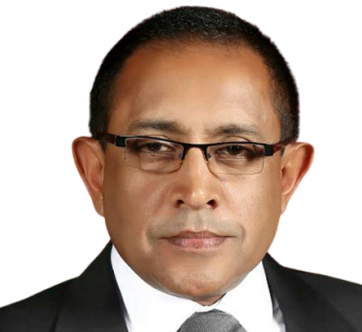Fact Check
In his speech, the MP claims that the number of people living in poverty has increased significantly since 2019. To check this claim, FactCheck.lk consulted the World Bank Poverty and Inequity Platform, the World Bank Poverty and Equity Brief Sri Lanka (April 2023) and the Department of Census and Statistics (DCS) Household Income and Expenditure Survey (HIES) Final Report 2019.
The World Bank (WB) defines the “poverty line” for countries classified as lower-middle income (such as Sri Lanka), with a purchasing power of USD 3.65 in 2017. WB calculates this for Sri Lanka as equivalent to LKR 214.20 per day (LKR 6,515 per month) in 2019.
If any household has a per-capita income that is below the poverty line, everyone in the household is considered poor. Based on the poverty line used, the WB has estimated that 11.3% of Sri Lanka’s population lived in poverty in 2019 and that it increased by 25.0% in 2022 (see Exhibit 1). However, it must be noted that since 2020 the estimates have been based on simulations, and not on updated survey data.
Sri Lanka’s official poverty line is defined as the ability to purchase a particular basket of goods. Based on the 2019 HIES the DCS calculated Sri Lanka’s official poverty line at a higher level than the WB, at LKR 6,966 per person per month. It assessed 14.3% of the population as falling below this poverty line in 2019. The DCS updates the poverty line every month based on inflation. As of December 2022, it stood at LKR 13,777 per person per month. However, there is no updated official calculation of the total population in poverty.
One of the few alternatives to WB estimates of poverty for 2022, is a national survey conducted by LIRNEasia in 2023, on a sample of 10,000. The survey estimated that 31% of Sri Lanka’s population was living below the LKR 13,777 poverty line. This study supports WB’s projection that poverty has more than doubled since 2019, as well as the MP’s suggestion that total poverty might be higher than WB’s estimates.
The MP’s claim is consistent with WB assessments of poverty in Sri Lanka, as well as unofficial estimates of the current levels. Therefore, we classify his statement as TRUE.
*FactCheck.lk’s verdict is based on the most recent information that is publicly accessible. As with every fact check, if new information becomes available, FactCheck.lk will revisit the assessment.
Additional note:
Measuring the number of people who are poor is a complex task due to the different ways in which poverty might be understood and defined. The most common method of assessing poverty is based on whether households have the means to achieve a minimum level of consumption, which is defined as the poverty line. However, alternative methods such as the Multidimensional Poverty Index (MPI), consider a household’s experience of multiple deprivations, not just consumption. For example, they could include aspects such as lack of schooling for children, physical disabilities, and not having clean drinking water.
Table 1: Sri Lanka’s Poverty Rate at World Bank Poverty Line of USD 3.65 per day (2017 PPP)

Sources: World Bank poverty and inequity platform; World Bank poverty and equity brief Sri Lanka April 2023.
Sources
The World Bank Poverty and Inequality Platform. Accessed on June 20, 2023, via https://pip.worldbank.org/country-profiles/LKA.
The World Bank Poverty and Equity Brief, April 2023. Accessed via https://databankfiles.worldbank.org/public/ddpext_download/poverty/987B9C90-CB9F-4D93-AE8C-750588BF00QA/current/Global_POVEQ_LKA.pdf.
Department of Census and Statistics, 2019. Household Income and Expenditure Survey Final Report. Accessed via http://www.statistics.gov.lk/IncomeAndExpenditure/StaticalInformation/HouseholdIncomeandExpenditureSurvey2019FinalReport.
LIRNEasia, 2023. Social Safety Nets and the State of Poverty in Sri Lanka. Accessed via https://lirneasia.net/wp-content/uploads/2023/06/LIRNEasia-Social-Safety-Nets-and-the-State-of-Poverty-in-Sri-Lanka-3.pdf.



This is really useful.